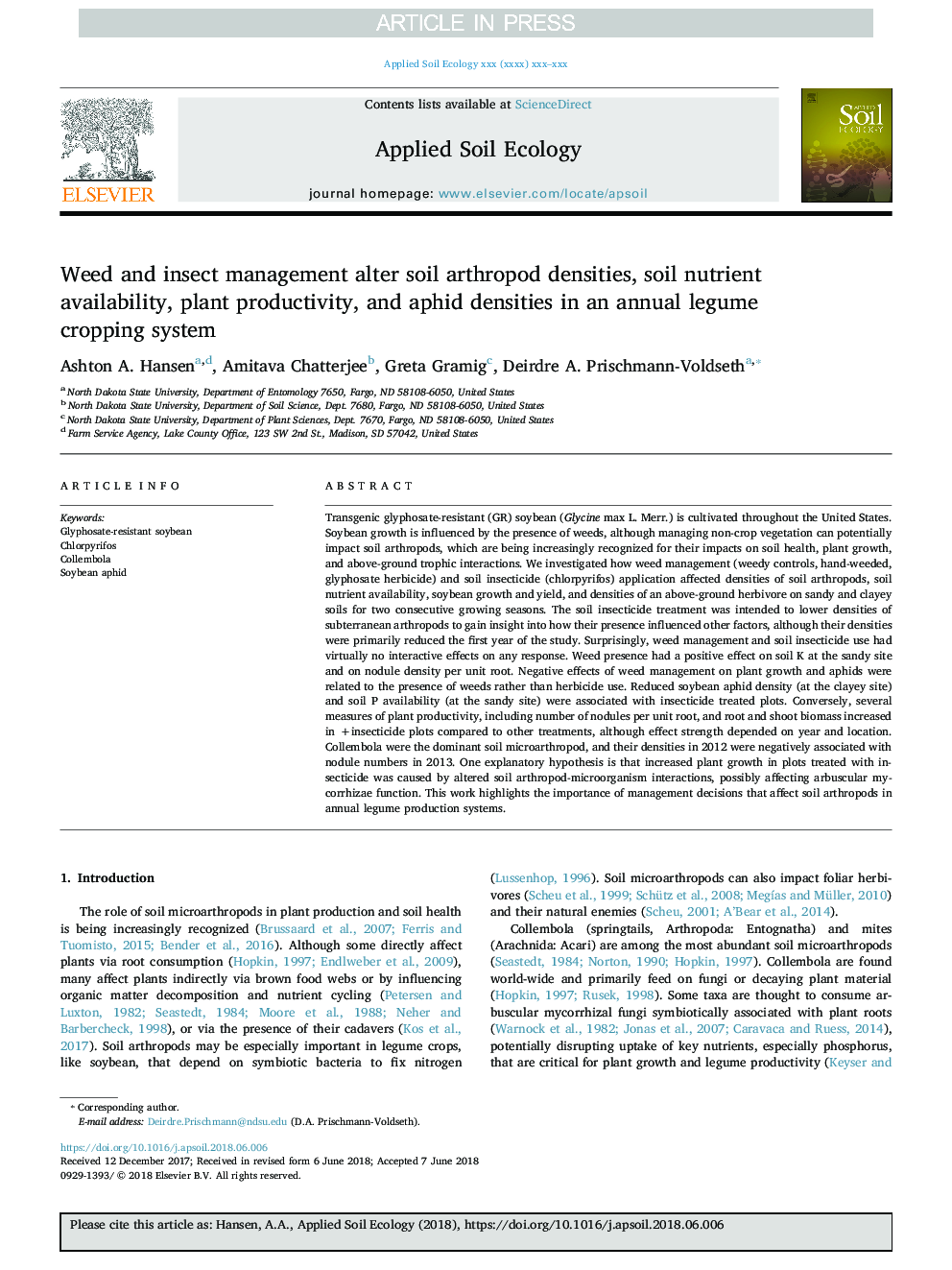| کد مقاله | کد نشریه | سال انتشار | مقاله انگلیسی | نسخه تمام متن |
|---|---|---|---|---|
| 8846578 | 1617753 | 2018 | 14 صفحه PDF | دانلود رایگان |
عنوان انگلیسی مقاله ISI
Weed and insect management alter soil arthropod densities, soil nutrient availability, plant productivity, and aphid densities in an annual legume cropping system
ترجمه فارسی عنوان
مدیریت علف های هرز و حشرات باعث کاهش تراکم های مختلف شهری، دسترسی به مواد مغذی خاک، بهره وری گیاه و تراکم شته ها در یک سیستم برداشت سالانه بومی
دانلود مقاله + سفارش ترجمه
دانلود مقاله ISI انگلیسی
رایگان برای ایرانیان
کلمات کلیدی
موضوعات مرتبط
علوم زیستی و بیوفناوری
علوم کشاورزی و بیولوژیک
بوم شناسی، تکامل، رفتار و سامانه شناسی
چکیده انگلیسی
Transgenic glyphosate-resistant (GR) soybean (Glycine max L. Merr.) is cultivated throughout the United States. Soybean growth is influenced by the presence of weeds, although managing non-crop vegetation can potentially impact soil arthropods, which are being increasingly recognized for their impacts on soil health, plant growth, and above-ground trophic interactions. We investigated how weed management (weedy controls, hand-weeded, glyphosate herbicide) and soil insecticide (chlorpyrifos) application affected densities of soil arthropods, soil nutrient availability, soybean growth and yield, and densities of an above-ground herbivore on sandy and clayey soils for two consecutive growing seasons. The soil insecticide treatment was intended to lower densities of subterranean arthropods to gain insight into how their presence influenced other factors, although their densities were primarily reduced the first year of the study. Surprisingly, weed management and soil insecticide use had virtually no interactive effects on any response. Weed presence had a positive effect on soil K at the sandy site and on nodule density per unit root. Negative effects of weed management on plant growth and aphids were related to the presence of weeds rather than herbicide use. Reduced soybean aphid density (at the clayey site) and soil P availability (at the sandy site) were associated with insecticide treated plots. Conversely, several measures of plant productivity, including number of nodules per unit root, and root and shoot biomass increased in +insecticide plots compared to other treatments, although effect strength depended on year and location. Collembola were the dominant soil microarthropod, and their densities in 2012 were negatively associated with nodule numbers in 2013. One explanatory hypothesis is that increased plant growth in plots treated with insecticide was caused by altered soil arthropod-microorganism interactions, possibly affecting arbuscular mycorrhizae function. This work highlights the importance of management decisions that affect soil arthropods in annual legume production systems.
ناشر
Database: Elsevier - ScienceDirect (ساینس دایرکت)
Journal: Applied Soil Ecology - Volume 130, September 2018, Pages 120-133
Journal: Applied Soil Ecology - Volume 130, September 2018, Pages 120-133
نویسندگان
Ashton A. Hansen, Amitava Chatterjee, Greta Gramig, Deirdre A. Prischmann-Voldseth,
